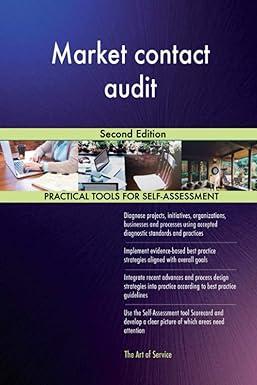Question
Use the comparative income statements and balance sheets below to complete the required ratio analysis. Comparative Income Statement For the Years Ended December 31, 20-C
-
Use the comparative income statements and balance sheets below to complete the required ratio analysis.
Comparative Income Statement For the Years Ended December 31, 20-C and 20-B 20-C 20-B Net sales $965,400 $1,028,600 Cost of goods sold 515,100 590,300 Gross profit $450,300 $438,300 Operating expenses Selling expenses $136,000 $169,100 Administrative expenses 150,200 182,400 Interest expenses 26,000 32,500 Total operating expenses $312,200 $384,000 Income tax expenses 45,500 18,200 Total expenses $357,700 $402,200 Net income $92,600 $36,100 Comparative Balance Sheet December 31, 20-C and 20-B Assets 20-C 20-B Cash $38,100 $43,500 Accounts receivable (net) 59,800 101,500 Merchandise inventory 150,900 171,600 Property, plant, and equipment 710,500 808,800 Total assets $959,300 $1,125,400 Liabilities and Stockholders' Equity Notes payable (due June 30, 20-D) $70,000 $70,000 Accounts payable 101,200 146,600 Bonds payable 154,000 280,000 Common stock, $10 par value 420,000 420,000 Retained earnings 214,100 208,800 Total liabilities and stockholders' equity $959,300 $1,125,400 Additional information:
All sales are made on account. Balances of selected accounts for December 31, 20-A are accounts receivable (net), $73,800; merchandise inventory, $139,200; total assets, $906,900; common stockholders' equity, $527,200; and common shares outstanding 42,000.
20-C 20-B Number of common shares 42,000 42,000 Dividends paid $44,400 $49,000 Required:
Prepare a profitability analysis by calculating for 20-B and 20-C the (a) net sales to assets, (b) return on total assets, (c) return on common stockholders' equity, (d) earnings per share, and (e) book value per share. Indicate whether there has been an improvement or not from 20-B to 20-C. Round to two decimal places.
20-C 20-B Improvement? a. Net sales to assets fill in the blank 1 to 1 fill in the blank 2 to 1 b. Return on total assets fill in the blank 4 % fill in the blank 5 % c. Return on common stockholders' equity fill in the blank 7 % fill in the blank 8 % d. Earnings per share $fill in the blank 10 per share $fill in the blank 11 per share e. Book value per share $fill in the blank 13 per share $fill in the blank 14 per share
Step by Step Solution
There are 3 Steps involved in it
Step: 1

Get Instant Access to Expert-Tailored Solutions
See step-by-step solutions with expert insights and AI powered tools for academic success
Step: 2

Step: 3

Ace Your Homework with AI
Get the answers you need in no time with our AI-driven, step-by-step assistance
Get Started


